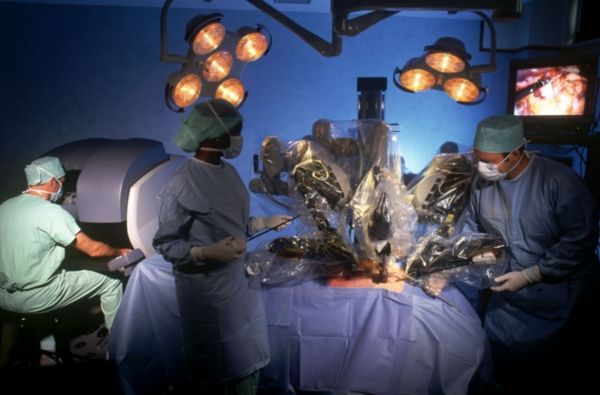Difference between revisions of "New treatments"
| Line 1: | Line 1: | ||
| − | < | + | <noinclude>{{early stage}}</noinclude> |
Clinical care lags fully fifteen years behind what is scientifically possible. If the hospital is brought up to speed with the laboratory by good information technology and by making research findings open to all, several new therapies will instantly come online and many more very exciting ones are likely to be discovered in the next five or ten years. | Clinical care lags fully fifteen years behind what is scientifically possible. If the hospital is brought up to speed with the laboratory by good information technology and by making research findings open to all, several new therapies will instantly come online and many more very exciting ones are likely to be discovered in the next five or ten years. | ||
Revision as of 17:51, 13 June 2010
| << Page in early stages >> |
|---|
Clinical care lags fully fifteen years behind what is scientifically possible. If the hospital is brought up to speed with the laboratory by good information technology and by making research findings open to all, several new therapies will instantly come online and many more very exciting ones are likely to be discovered in the next five or ten years.
Contents
Reverse-engineering biology
Our knowledge of the intricacies of human biochemistry (though still very poor compared to the vast amount we don't know) is expanding exponentially. As we develop more powerful computers and better scanning technologies, we become more and more able to accurately model what is going on inside the human body (including the brain). This creates the possibility of so-called 'rational drug design', in which drugs can be designed based on what we actually know about the chemistry of how a disease works, and what we can do at the molecular level to disrupt the pathways of pathology. Drugs can be (and have been) designed by artificial intelligence using a sufficiently detailed picture of biochemistry. Reverse-engineering biology also allows for drugs (and other medical interventions) to be tested in computer simulations without the risk to human health inherent in testing out new drugs, though this is still some way off.
The open-source movement has already emerged as the dominant camp camp in organizing and distributing knowledge of the mechanations of the human body. This is partly due to Tony Blair and Bill Clinton's decision in 2000 not to allow patents on genes, and partly due to the effort of open-source projects like Open Wetware and The Blue Brain Project, a huge open-source project to reverse-engineer the human brain.
Tissue engineering and regenerative medicine
Smart biomaterials, stem cells.
- http://www.ted.com/talks/anthony_atala_growing_organs_engineering_tissue.html
- Stem cells
- 3-D printing of organs using desktop printers with cells in the cartridges instead of ink
Genomics
Somatic gene therapy on the horizon, could treat all genetic diseases.
Nutrigenomics is the field of using genetic information to calculate the healthiest diet for a person. http://news.bbc.co.uk/2/hi/health/8550091.stm
Robotic surgery
Telesurgery has already been conducted, where a surgeon in, say, New York, operates on a patient in Paris by means of a remote-control robot. In an open, post-scarcity healthcare system this could become much more common, as the only real obstacle to it is the artificial scarcity of healthcare. Telesurgery would grant people all over the world greater access to specialized surgical care; geography would no longer be an obstacle to surgery; as long as the patient can be moved to any hospital that has a surgical robot they would thereby have access to the whole world's surgical skills; it would be a post-scarcity situation with regard to surgical skills.
One key advantage of robotic surgery is that the movements of the surgeon's hands can be miniturized; a surgeon can make a movement and the robotic hand can emulate the same movement, but 100 times smaller. Robotic surgery also eliminates the tiny tremors that surgeons train so hard to control, but which are an inevitable part of all fine human movement. Future generations of surgical robots will miniturize this further, down to the micrometer level. Such robots could then even be inserted into the patient and controlled remotely from the outside. As Richard Feynman quipped in his original proposal of nanotechnology, "It would be interesting in surgery if you could swallow the surgeon."

New cancer treatments
- Dendrimers
- Photodynamic therapy
- http://www.ted.com/talks/david_agus_a_new_strategy_in_the_war_on_cancer.html
The future: nanomedicine
http://www.foresight.org/nanomedicine